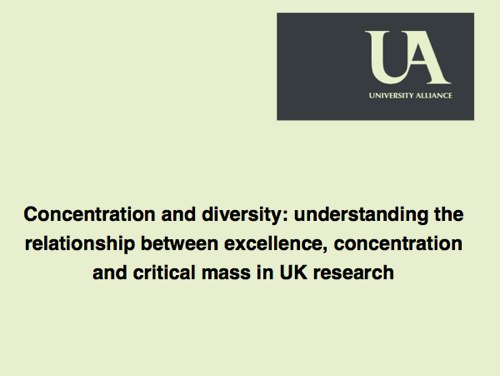 Selectivity not concentration has driven excellence
Selectivity not concentration has driven excellence
A policy of selectivity–funding research based on quality – has driven up the quality of UK research since the introduction of the RAE, not concentration. Selectivity has resulted in concentration of research funding where quality exists. This is fully supported by University Alliance.
The UK has one of the most highly selective research funding methods in the world – QR funding in 2009-10, based on RAE 2008, has not changed that:
- In 2007-8, four institutions received 29 per cent of Quality-related (QR) funding (and 23 around 75 per cent).
- In 2009-10, four institutions received 32 per cent of QR funding (and 25 around 75 per cent).
Selectivity can, however, be taken too far. HEFCE’s ‘Fundamental Review of Research Policy and Funding’ concluded that “a major increase in selectivity could reduce the number of research-led institutions to a level that would be inconsistent with the general health of the UK research base, in terms of both its economic and its social contribution…leading to complacency and ossification.”
Excellence is not determined by volume alone
There is no direct correlation between volume and excellence outside some of the physical sciences. The relationship between volume and excellence varies by discipline. Three broad categories were identified by experts at the University of Leeds for the HEFCE Fundamental Review of Research Policy and Funding:
- high impact at high volume (where volume is related to impact, for example the clinical sciences)
- higher impact at high volume (where small units can be effective, for example in engineering and social sciences)
- no clear pattern (where the ‘lone researcher’ can produce excellent research with high impact, for example in mathematics, arts and humanities)
In the small number of science-based disciplines where there is a correlation between volume and quality:
- there is no identifiable ‘threshold’ or ‘critical mass’volume is ‘evidently not the only factor’ (HEFCE Fundamental Review)
- the increasing capacity for both interdisciplinary and international collaboration can redefine what counts as critical mass.




